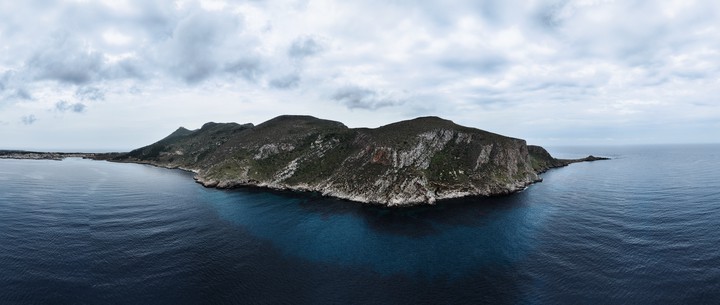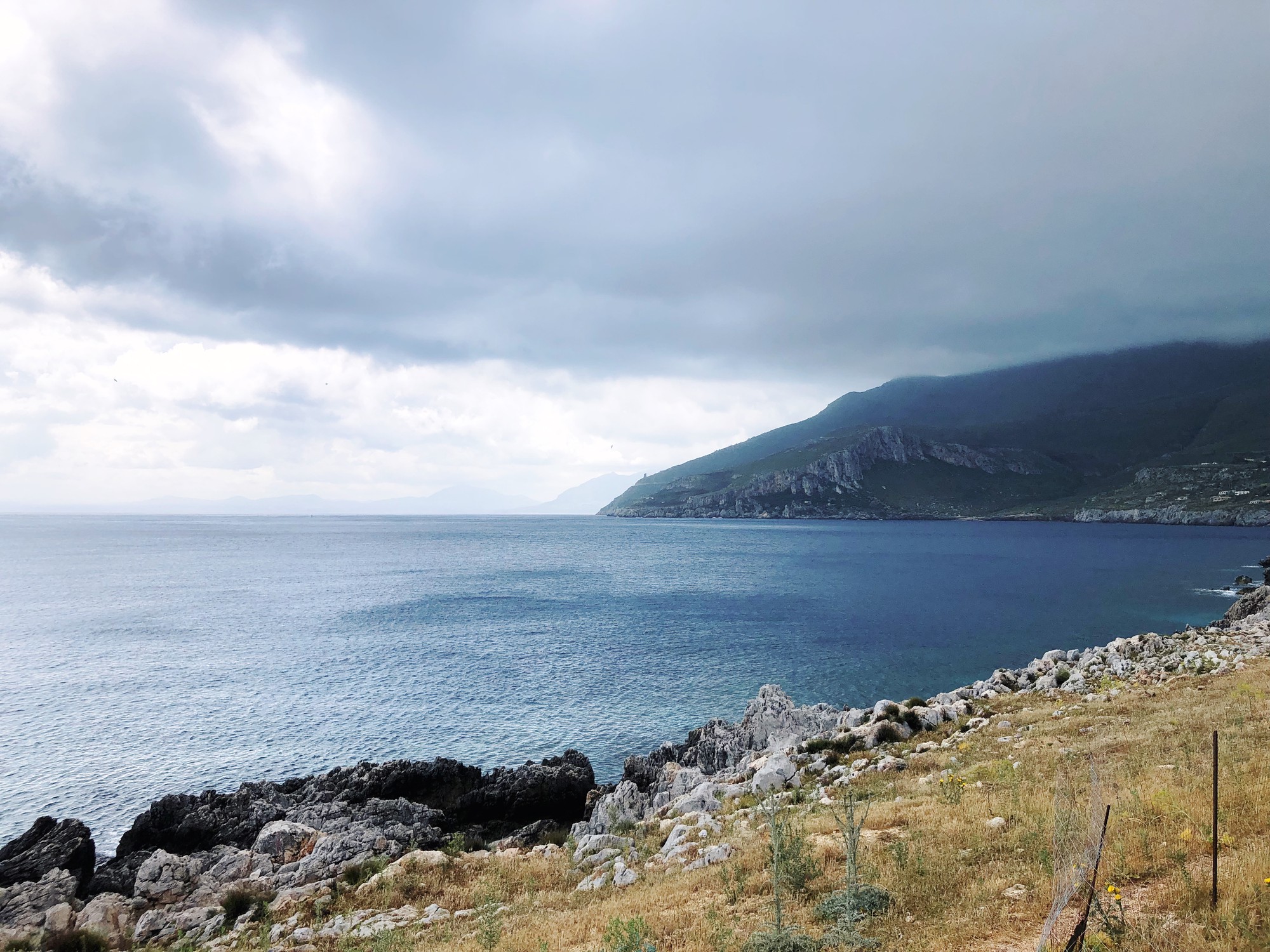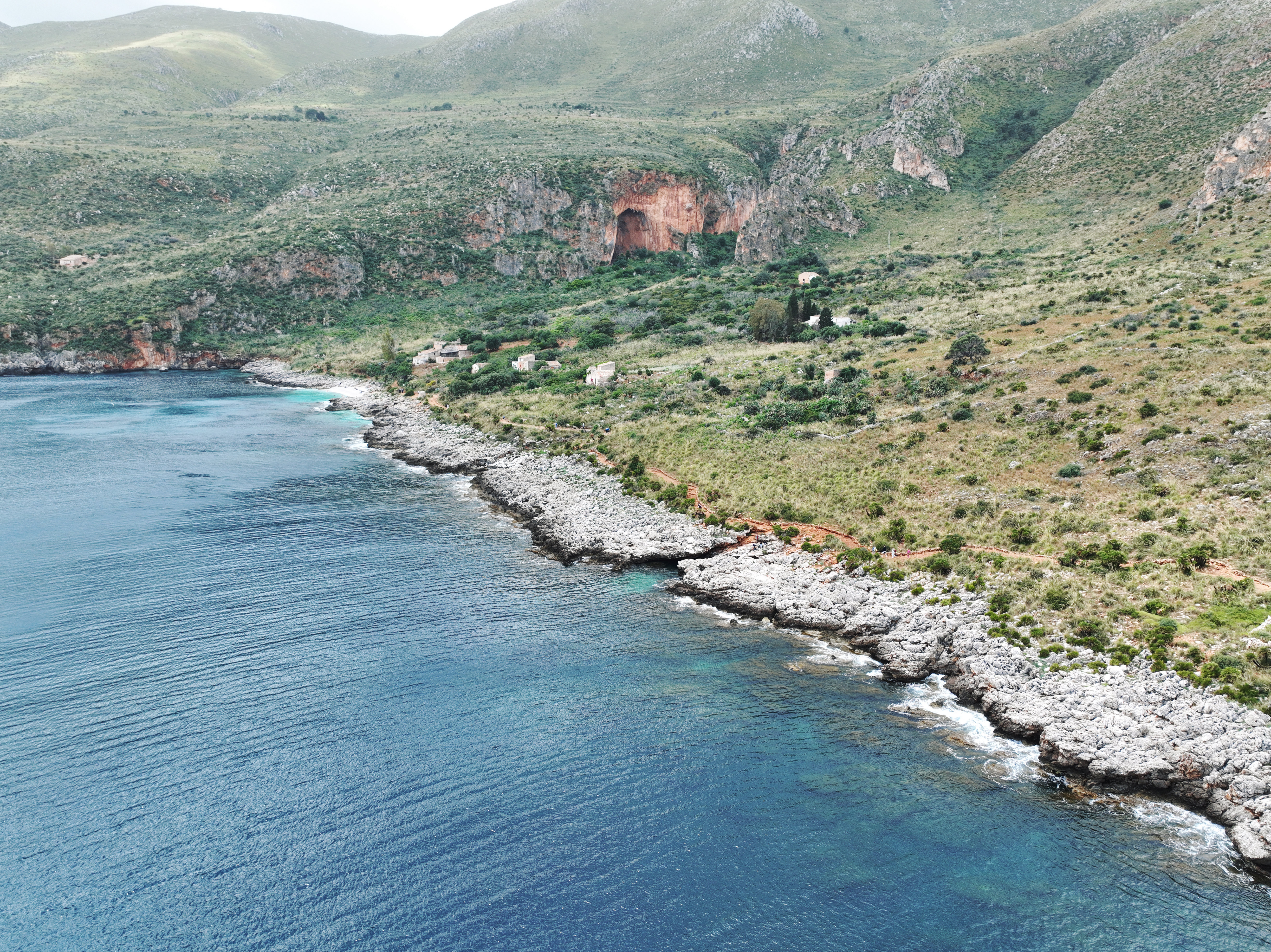A fieldwork journey in Sicilian prehistory
Last week, the project members of SEAFRONT travelled to northwestern Sicily to conduct fieldwork around prehistoric cave sites. Marcello Mannino, a professor at Aarhus University and project collaborator, joined our team, providing valuable insights into Sicilian prehistory throughout the trip.

The fieldwork aimed to visit the Mesolithic-Neolithic sites of Grotta dell’Uzzo (Trapani) and Grotta d’Oriente (Favignana), as well as collecting modern shell samples from areas around these sites. The modern shell analysis with the use of LIBS and stable isotope analysis will be a preparatory step for the analysis of the archaeological samples during the second phase of the SEAFRONT project.
San Vito Lo Capo
Despite the unpredictable weather, our first destination was west of Palermo, to the peninsula of San Vito Lo Capo. There, we jumped into the water and collected modern shell samples from the Tonnara del Secco location near Grotta dell’Uzzo, which itself is located in a nature reserve.

After getting our samples, we followed the path west of San Vito Lo Capo along the coast where the Grotta di Cala Mancina is located. We then climbed to the Grotta dei Cavalli where rock paintings dating to the late Neolithic period are present.

Grotta dell’Uzzo
The next day, we visited the Zingaro Nature Reserve where the Grotta dell’Uzzo is located. The Zingaro, a nature reserve since 1981, is Sicily‘s first protected area. In the past, it was home to small farming villages while today is a popular touristic destination for hiking and swimming.

Grotta dell’Uzzo, a large cave, was excavated between 1975 and 1983. Because of its chronological sequence of occupation which is also witness to a Mesolithic-Neolithic transition cultural phase, the cave is regarded as a focal point of interest in the Mediterranean, similarly to Franchthi cave.
Favignana and Grotta d’Oriente
On the last day of fieldwork, we drove to Trapani and hopped on a ferry to Favignana of the Egadi Islands off the northwestern coast of Sicily. Once on the small mountainous island, many areas are easily accessible by bike. However, this is not the case for the Grotta d’Oriente, which can only be accessed with climbing equipment. There, we resorted to technology and LEIZA’s aerial drone, which gave us visual access to the cave and great views of the surrounding area of the site.


All in all, the exploration of Sicily’s dense prehistoric landscape was truly fascinating. We are looking forward to the results of our modern samples from Sicily and we are grateful to Marcello for his significant help and contribution to the fieldwork as well as his interesting stories of all sorts along the way!